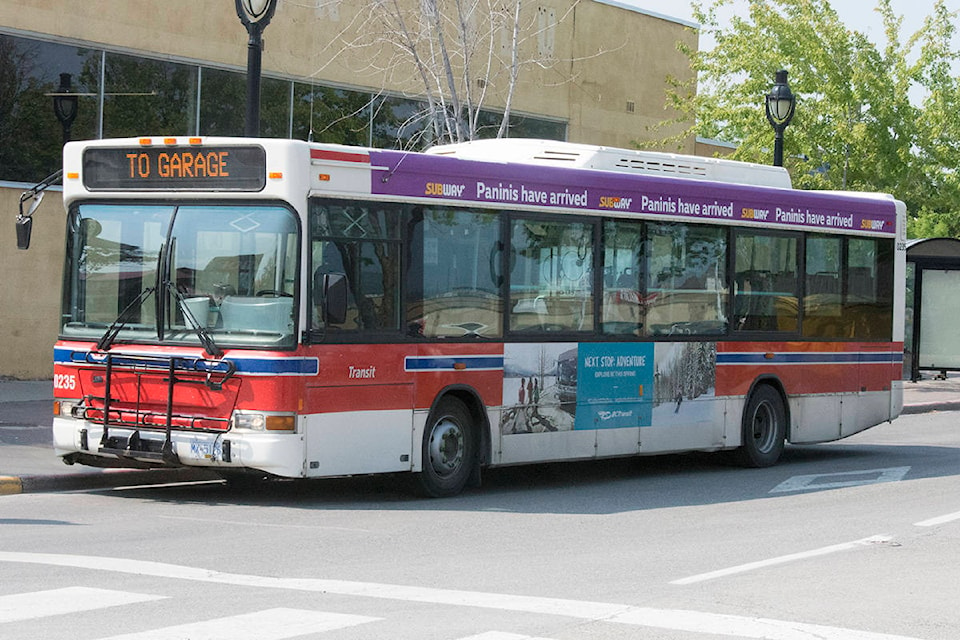B.C. Transit is looking at an updated transit plan for Cranbrook with an eye at tweaking existing operations and planning for potential future expansion.
Chelsea Mossey, Manager, Government Relations and Melissa Coates, Transit Planning Coordinator, both with B.C. Transit, briefed mayor and council on the state of operations within the city while pitching the first steps i the Terms of Reference for a Transit Future Service Plan, which will identify changes impacting transit demand now and in the next five to seven years, review existing priorities and remove outdated priorities.
The Transit Future Service Plan follows up from a transit service review in 2013, which will reassess the goals and targets that came out of those discussions.
“The Transit Future Service Plan is a plan for the next five years. It outlines short to medium term priorities in terms of transit and corresponding infrastructure,” said Coates. “It also takes into account community changes since the last service review and the last comprehensive service review for the Cranbrook transit system was in 2013. In 2018, there was a service discussion document completed, this did outline some background and some potential opportunities and challenges of the Cranbrook system that can be used as context for this plan.”
The Cranbrook Transit Service Review from seven years ago suggested service additions to the Slaterville area and route amalgamations on Sundays, both of which were implemented in 2014. Service to Wildstone and the airport were both suggested, however, there is no update on actions taken for those two areas.
The Transit Future Service Plan will look at service change priorities such as routes and frequencies and infrastructure priorities such as shelters, exchanges and transit facilities.
Some specific proposed changes to service options include improving schedule reliability, improvements to Route 14, improved service to southwest neighbourhoods, evening service and service to St. Eugene and the Canadian Rockies International Airport.
Those proposals will be taken to some kind of public engagement format yet to be determined, whether an online survey or open houses. The public engagement phase is planned for the spring, while a final report is expected by the summer.
Cranbrook has operated a conventional transit system for over 20 years, which currently runs five buses on eight routes. That breaks down to 12,000 service hours annually with 199,000 passenger trips. A custom system (handyDART) has operated since 1982, which expanded to 6,000 hours annually this month, with three buses providing approximately 9,000 passenger trips per year.
Tok Transit operates the the Cranbrook system in partnership with BC Transit and the City of Cranbrook.
Additionally, the BC Transit officials are suggesting a fare review, given that the last one was in 2013. Local government retains 100 per cent of the revenues to offset local costs.
For conventional transit systems, the provincial government and municipalities split the cost 46.69/53.31 per cent, respectively. For custom transit, the cost share is 66.69/33.31 per cent between the province and the municipality, respectively.
According to the city’s 2020 annual report, Cranbrook’s share of this year’s transit cost is budgeted at $748,000 net of revenue.
trevor.crawley@cranbrooktownsman.com
Like us on Facebook and follow us on Twitter
